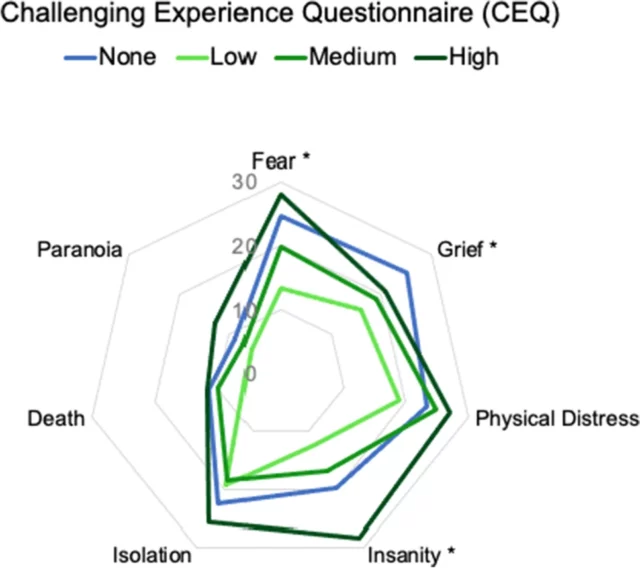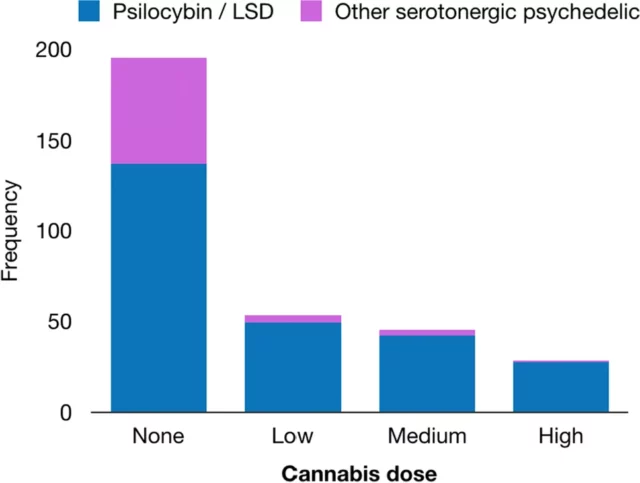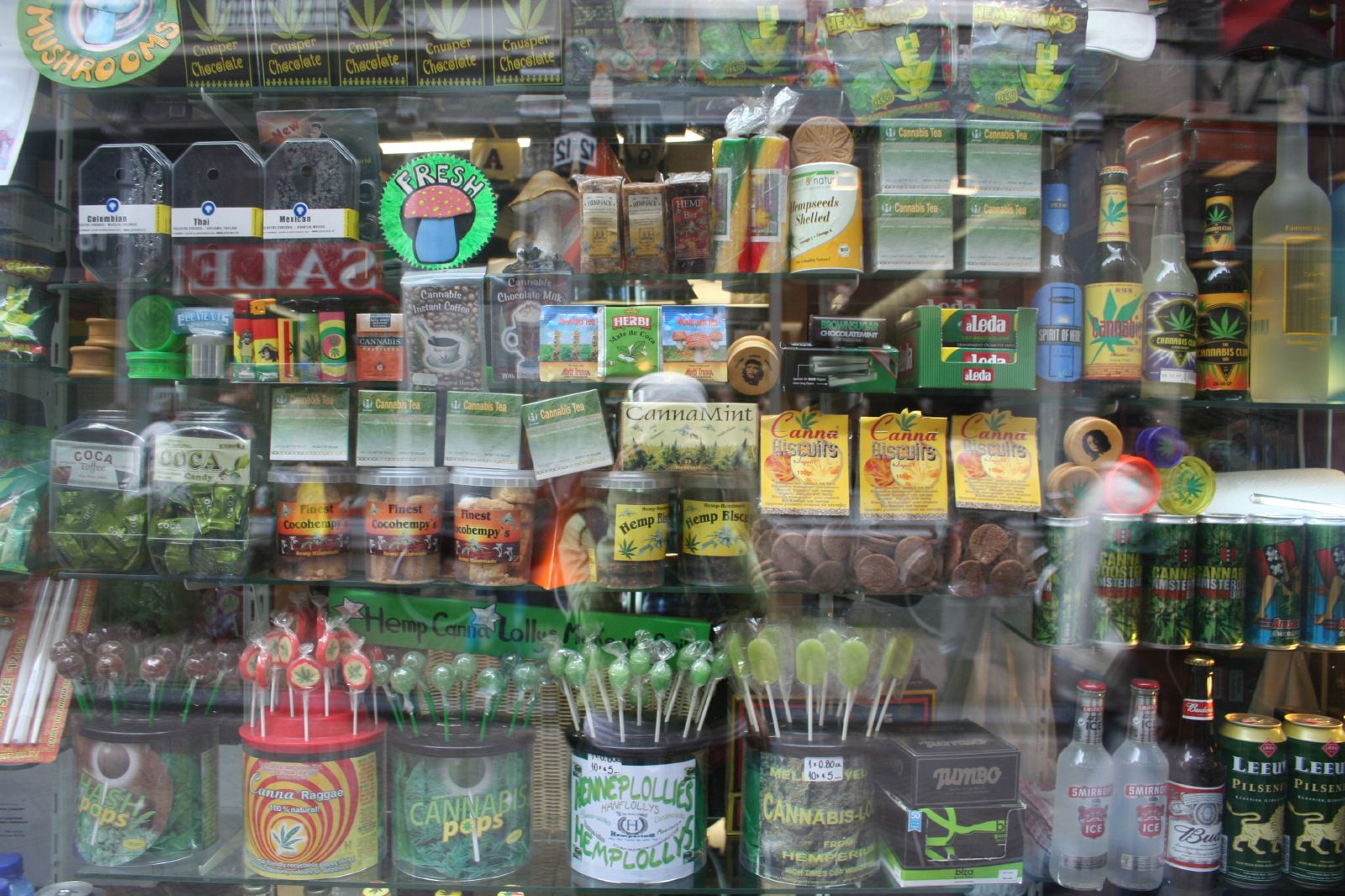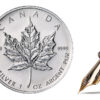Using cannabis while tripping on psychedelics like LSD or psilocybin produces a more intense experience than if psychedelics are used on their own.
That’s according to a recent study published in the journal Psychopharmacology, which found that people who mix cannabis and serotonergic psychedelics go through a more intense mystical experience, a stronger sense of loss of self-identity and more intense visual alterations than those that stick to only psychedelics.
However, there was no link between using both substances and experiences of emotional breakthrough.
“Given the widespread simultaneous use of psychedelics with other substances, the present investigation might have value for harm reduction messaging, providing data on previously unreported potential side effects of this polydrug combination,” reads the study by researchers at the Centre for Psychedelic Research, Imperial College London.
They explain that by knowing more about the interactions between psychedelics and cannabis, researchers could innovate new approaches to maximize the beneficial effects of both.
The study also opens a conversation on potential guidelines for clinical studies, including a potential cannabis abstinence requirement for participating in a clinical study involving psychedelics.
High-dose cannabis consumers reported more fear when mixing with psychedelics
Respondents who smoked cannabis in high doses reported more fear, and more feelings of going insane while on psychedelics than those who didn’t. Conversely, users consuming low doses of cannabis felt less fear than those who didn’t consume it at all during the psychedelic experience.
“While the molecular basis of the synergistic effects between cannabis and psychedelics was not explored in the current study, the obtained results are suggestive of its existence,” reads the study.

Image via ‘Psychedelic experience dose-dependently modulated by cannabis: results of a prospective online survey’
For the study, researchers recruited adults who were planning on using psychedelics including LSD, psilocybin, DMT, mescaline, 2C-B and other psychedelics affecting serotonin.
Participants were given a set of online surveys using an online platform seven days before and one day after they took the psychedelic.
Half of the participants took LSD, 29 per cent took psilocybin, 12 per cent took ayahuasca and just over 3 per cent took DMT.
Participants were separated into four different groups depending on the amount of cannabis normally consumed when taking the psychedelics — whether they abstained or if it was mild, medium or a high dose.
Read more: US DEA suggests big increase of cannabis and psilocybin production for research
Read more: Psilocybin restores brain areas damaged by depression, study shows
Out of 321 participants, 39 per cent consumed cannabis, and one-third of those said they consumed pot with LSD or psilocybin often or always. Most of the users used low amounts, while 9 per cent of participants used high doses of weed.

Image via ‘Psychedelic experience dose-dependently modulated by cannabis: results of a prospective online survey’
Researchers used five questionnaires focusing on different aspects of the psychedelic experience while controlling for environmental factors that could have affected the setting. The questionnaires used included: Mystical Experience Questionnaire, visual subscales of Altered States of Consciousness Questionnaire, Challenging Experience Questionnaire, Ego Dissolution Inventory and Emotional Breakthrough Inventory.
Researchers collected other demographic information such as age, sex, nationality, education level, employment status, history of psychiatric conditions and drug use.
Cannabis and classical psychedelics could act on similar receptors
So-called classical psychedelics act on serotonin 2A receptors in the brain, and are known to produce profound distortions and changes in sensory perception while altering mood and cognition.
“The two key chemical constituents of cannabis are THC and CBD, and while most of their effects are believed to be exerted through cannabinoid type 1 and type 2 receptors, several studies have also suggested they interact with serotonin receptors,” reads the study.
Other studies have shown that at high concentrations, CBD acts as on the serotonin receptors.
“In any case, due to the overlap in receptor targets, we can expect a possible synergistic interaction between serotonergic psychedelics and cannabis.”
Read more: Nature amplifies therapeutic effects of psychedelics: study
Read more: Psilocybin restores brain areas damaged by depression, study shows
Follow Natalia Buendia Calvillo on Twitter
natalia@mugglehead.com














